Understand the DOF scales and hyperfocal distance, manual focus will be made simple.
2018.07.19
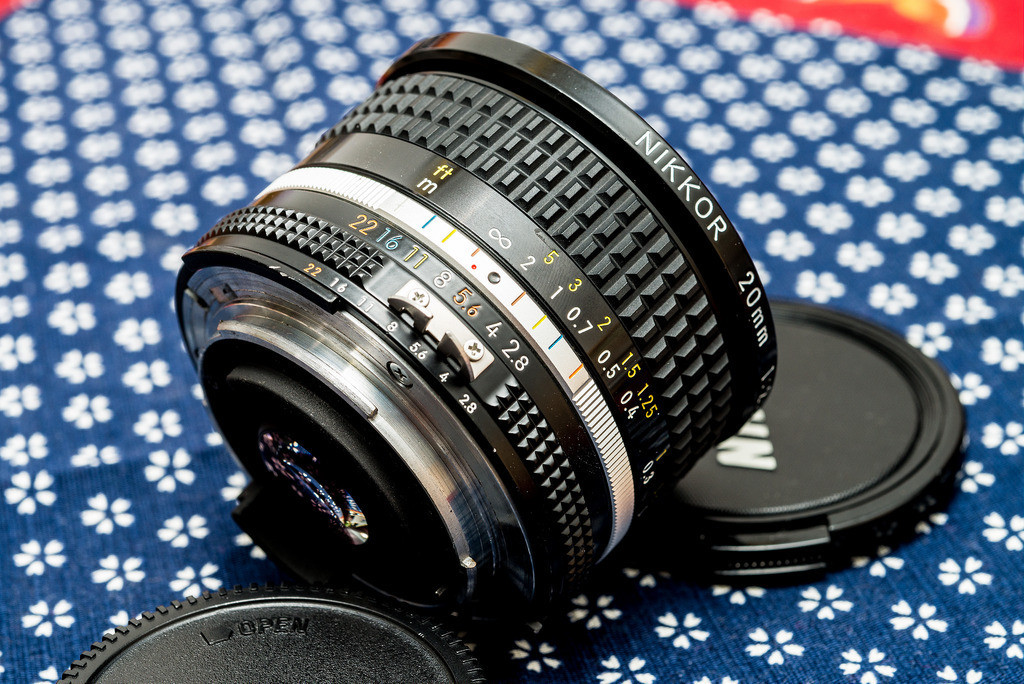
“Dear friends, who love photography, do you have vintage lenses stashed away at hand? Have you noticed how much more complicated the dials on old lenses look compared to modern ones? This article will teach you how to read the DOF scales of vintage camera lenses and explain what hyperfocal distance means. After you’ve gained a thorough understanding of these, you will find out that by manually adjusting the focus of an old lens is not as difficult as you may imagine!”
Whenever the depth of field is in question, some of the more experienced people online would usually just tell you to check the DOF scale, or say that hyperfocal distance won’t require you to adjust the focus, or other stuff relating to “focal length”. However, there are only three kinds of people in the world: ones born in the era of auto-focus, ones that know how to manually focus but disregard the DOF scale or ones who completely understand the purpose of the DOF scale. The former two probably covers more than eighty percent of photographers, therefore it would make sense for them to not fully comprehend the advice from the more experienced. But think about it, are we really going to be content with staying ignorant? Of course not! So today I will be explaining to everyone what exactly is the “DOF scale”, and what exactly it can be used to achieve. And from now on… wouldn’t it be just a little bit entertaining to at least be able to toy with some newbies?
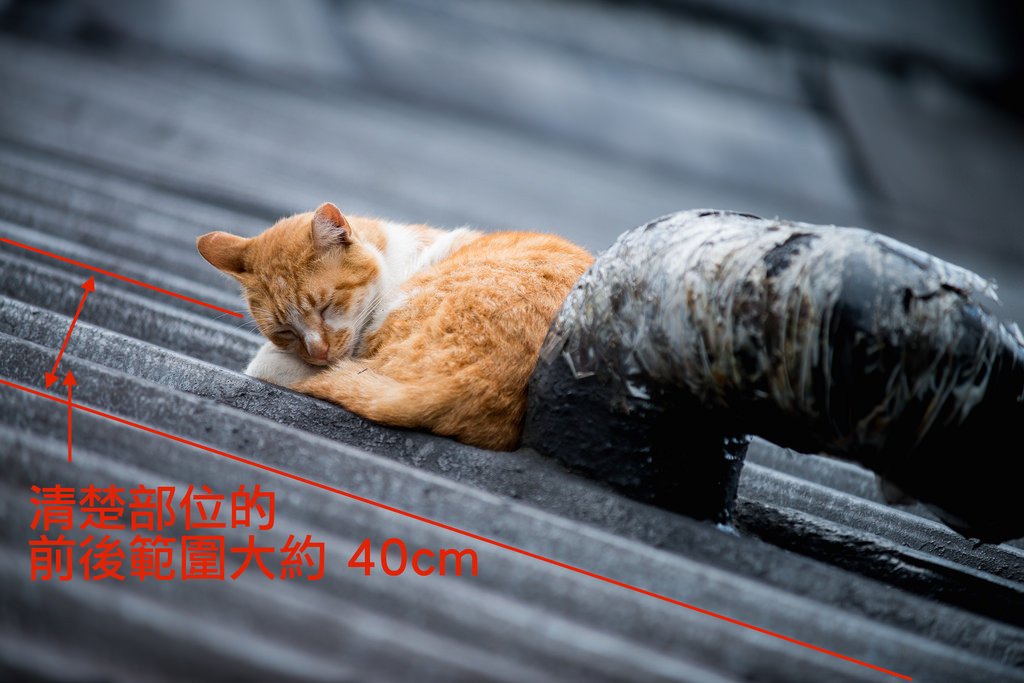
Fine, the DOF scale does not exist for the purpose of fooling noobs, and if you want to be able to master the details of a scene and the area of its bokeh effect, then having knowledge of the DOF scale is a definite must. Take for instance the image above, the desired effect is to blur the portion of the roof close to us and away from us in order to make the picture less complicated and put focus on the cat. This effect requires the control of bokeh to obtain. Back in the days, we have to rely on our experience or estimation to obtain the effect in the picture above that has “a roughly 40cm wide area with sharp focus”, and cannot achieve this by just adjusting the aperture. But the tables have turned! As long as you can grasp the concept of the DOF scale, random guesses will no longer be your only solution!
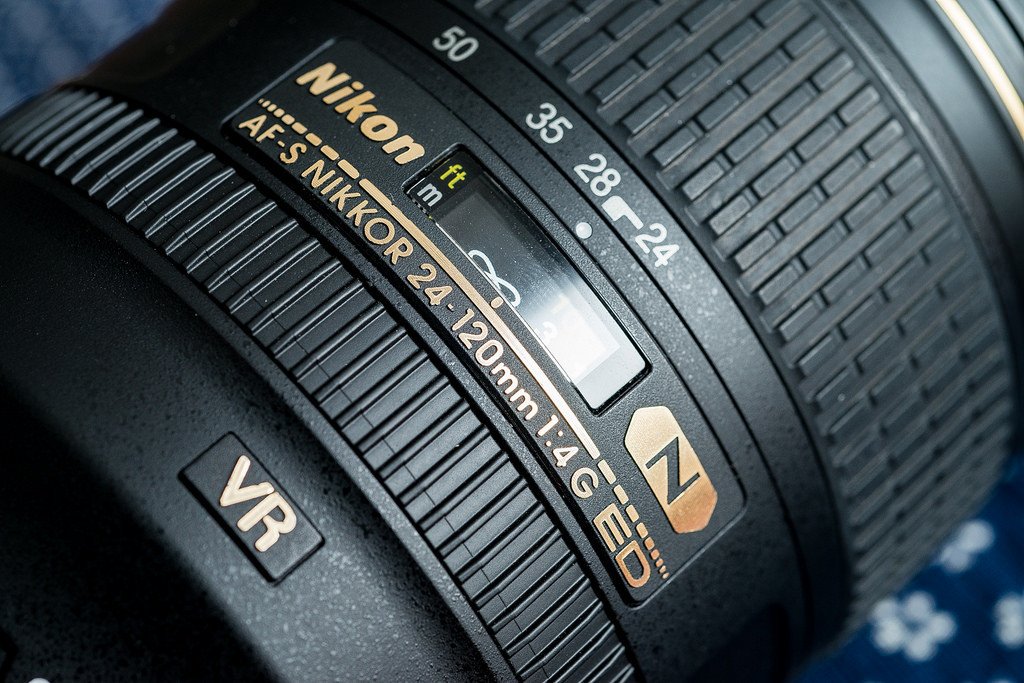
First, pay attention to one thing, that is new lenses mostly lack a DOF scale, and you must seek out a vintage lens as mentioned earlier to be able to find one. Though worry not, there are a lot of reference charts on the internet, even smartphones have built-in depth of field apps that can calculate for you what the DOF scale reading would be under different lenses and focal lengths. You only need to type “DOF scale” in your query, and you would be able to find a whole range of online resources or Apps. I will not talk more about it here, so do go find it for yourselves! As for the purposes and application of these scales, that’s what this article was written for, so don’t hurry off to search for it yet, finish reading this article first.

Image above: Understand hyperfocal distance, and you will be able to achieve the level of “being able to shoot without having to adjust the focus” by using a manual focus lens. Photos like the one above can be shot by simply pressing the shutter with your camera still hanging around your neck! You might think that, aside from identifying the area of the depth of field, does the DOF scale not have any other uses? If you’re someone that frequently uses vintage lenses, or someone who plans to enter the world of film cameras and manual focusing, then you will have to know this very important term: hyperfocal distance. Hyperfocal distance refers to when you have reached a certain distance away from your subject, as long as you turn the focus ring to its extreme, you will “get a clear image no matter what”. This concept is explained in numerous online tutorials, but very few provide precise and simple explanations. Therefore after I’ve introduced the use of the DOF scale in the following paragraphs, I will also additionally explain the concept of “hyperfocal distance” and how to utilize it.
DOF scale: tells you the range of the subjects within your field of view that will be in focus “without requiring adjustment”
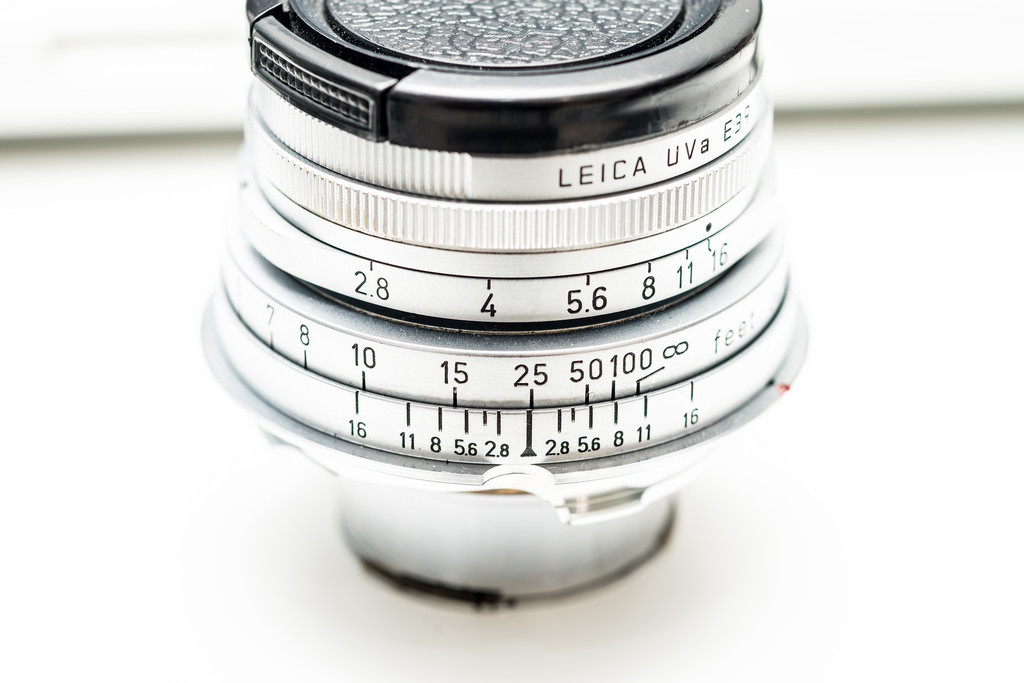
There are not much difference in appearance between the DOF scales from different brands, generally speaking, it will be labeled like as seen in the bottom two layers in the above image(the one with the infinity mark and the one below it with the numbers 2.8, 5.6 mirroring each other), with both of the rings able to turn to match. As for how to read it? This is actually very simple, first we have to confirm the current aperture setting, lets say it is f2.8, then we’ll only have to pay attention to the area between the two 2.8 markings on the bottom ring; and if the setting is at f8, then we look between the two 8’s. What do we look at, then, between the indicated area? The answer is what the lines above the numbers points to, the distance caught in between the lines is the area where “no focusing is needed to get a sharp image”. This may be difficult to understand, so I’ve made the illustration below for a clearer explanation, please refer back to the image above when reading this illustration.
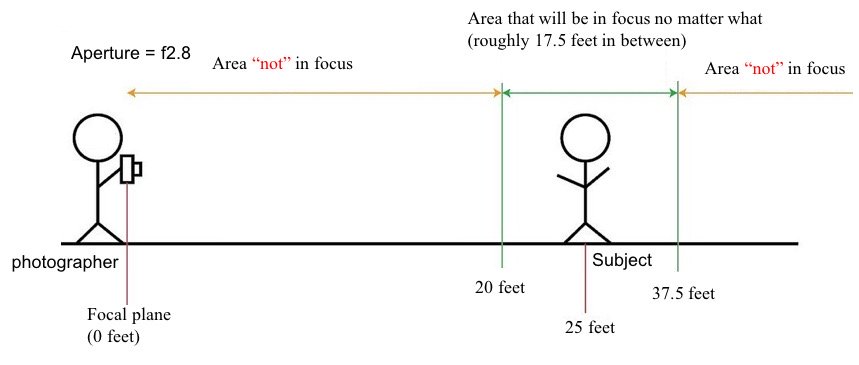
In the previous image, the bold line in the middle is matched to the focus distance of 25 feet(old lenses are marked in imperial measurements), which means that the “subject” is 25 feet away from the photographer, and the focus ring must be turned to the distance of “25ft” for the subject to be in focus. However, the “depth of field” has a certain range, like the cat photo shown earlier. In that picture, the area before and after the cat within 40cm are all in focus, therefore it is not necessary that the “subject” stay still when the focus is at a distance of 25ft. Referencing the DOF scale in the above image, the mark for f2.8 points at the area between around 20ft and 37.5ft in the ring above(estimate the numbers by scale), which means that when the focus is around 25ft and the aperture setting is f2.8, the “clear area” will be between the space that is 20 and 37.5 feet away from the photographer. And that means that “the subject can step forward by 5ft or backward by 12.5ft” and still remain in focus in the scene. Then what of the areas outside of that range(0~20, 37.5~infinity)? That of course, is what we call “bokeh”.
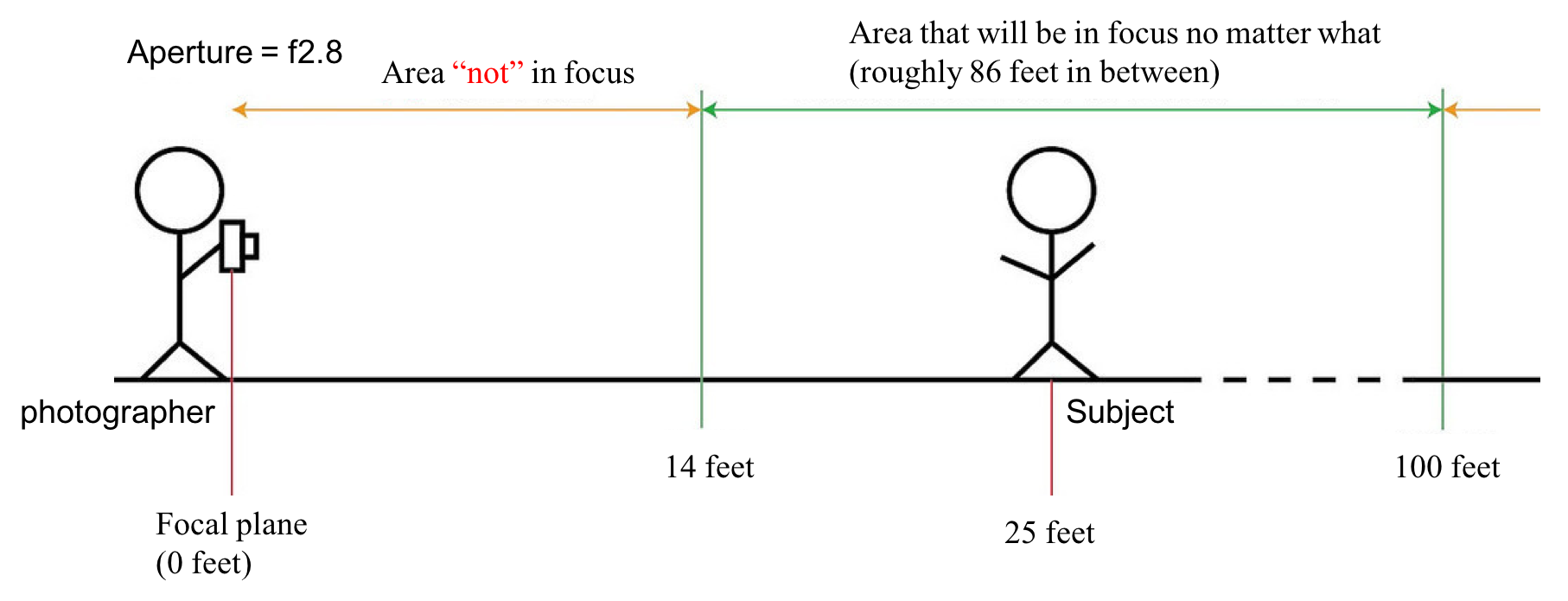
When the aperture is decreased, the depth of field will also become deeper, decreasing the area of a blur. This can actually be read easily from the DOF scale. When the aperture is adjusted to f8, we will be referring to the lines above the number 8, which marks the area between 14ft and 100ft, meaning that in the area that is between 14ft and 100ft(roughly 30m) away from the cameraman, the scene will be sharp and in focus with no bokeh. Therefore as long as the background behind the subject is not further than 30 meters away(100 feet), then everything will be in focus as it is within the depth of field with no bokeh. Not only can this concept be used to identify the area of bokeh, it can also be used to shoot objects moving in within the area “in between 14ft and 100ft” without having to readjust the focus. This makes life much simpler for people who intend to shoot little animals, children or athletes using manual lenses.
Hyperfocal distance: When exceeding the “indicated distance”, no focusing is required for the result to be crisp!
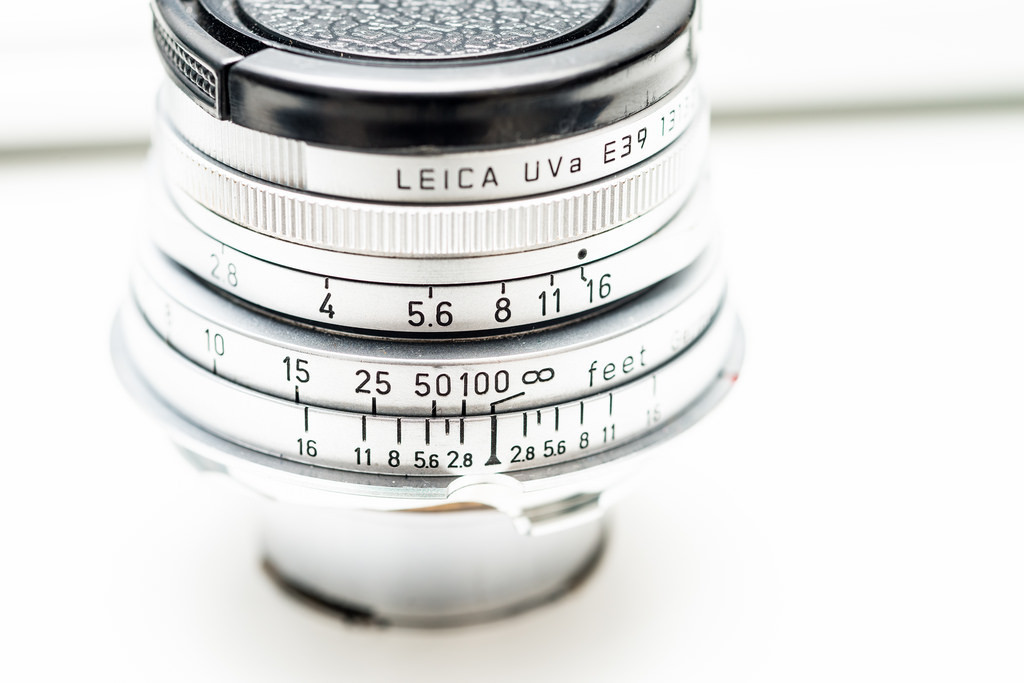
After understanding the concept of the DOF scale, you must be wondering, what purpose does the “infinity sign(the horizontal 8)” serve? Actually, infinity focus refers to the focal distance applied to subjects beyond the maximum distance of the lens’ depth(the distance where objects will be in focus without requiring focus). Though “how far” does the distance have to be to be considered infinite and therefore not requiring focus? The answer is already written on the lens. When we match the infinity sign to the bolded line in the middle on the bottom layer of the lens, you will find that there are no more numbers on the other side of infinity. That means that all we need to look at are the numbers left to the infinity sign and match it with the aperture value on the layer below and we will be able to see from which distance onwards, focusing will not be required for each aperture value, and this concept is the so-called, “hyperfocal distance”.

How do we determine and apply the hyperfocal distance then? For the lens in the image above, the line on the left marked with 2.8 falls right under the mark for 100ft when the infinity sign is dialed to the middle, this means that when the aperture is set at f2.8, then starting from 100ft until infinity all objects will be reasonably clear and in focus. To put it simply, when your aperture is set at f2.8, as long as your subject is over 30 meters away from you, then all you need to do is turn your focus ring to infinity(match the middle line with the infinity sign), then you will be able to take clear pictures without having to focus.
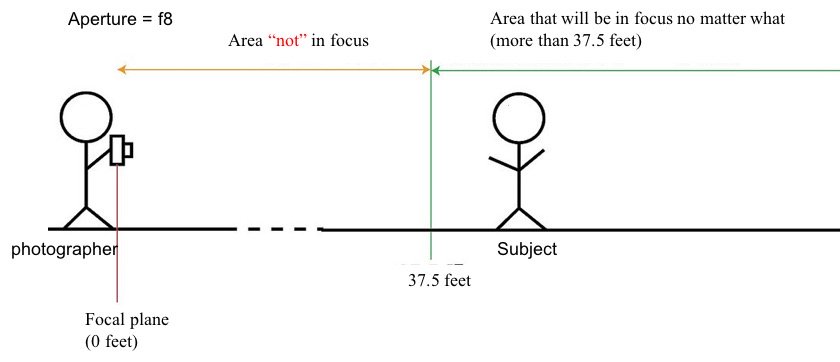
You might be thinking, what in the __ would I be shooting in such long distances such as 30 meters(100ft)? Actually, the hyperfocal distance limit decreases by quite a lot, when the aperture is shrunk to f8, the hyperfocal distance will decline to around 37.5ft(roughly 10 meters), and is easily sufficient for shooting passengers and active children. Furthermore, what is worth mentioning is that the shorter the focal length is(the more wide-angled it is), the shorter its hyperfocal distance is. Take for example the 20mm Nikon ultra wide angle lens showed previously in this article, the hyperfocal distance is anything beyond two meters. So as long as your subjects are more than two meters away from you, you will be able to shoot anything without having to focus with your focus ring dialed to infinity. Therefore if you don’t want to attract attention when you shoot on the streets, using a wider angle lens makes it easier to focus, and you won’t have to eye everything and keep the camera stuck to your face the whole time. Note: It becomes apparent from the above point, the reason wide angle lenses don’t usually have the bokeh effect is that its hyperfocal distance is too short. Therefore unless your lens is virtually touching your subject, it is nearly impossible to achieve any amount of bokeh.
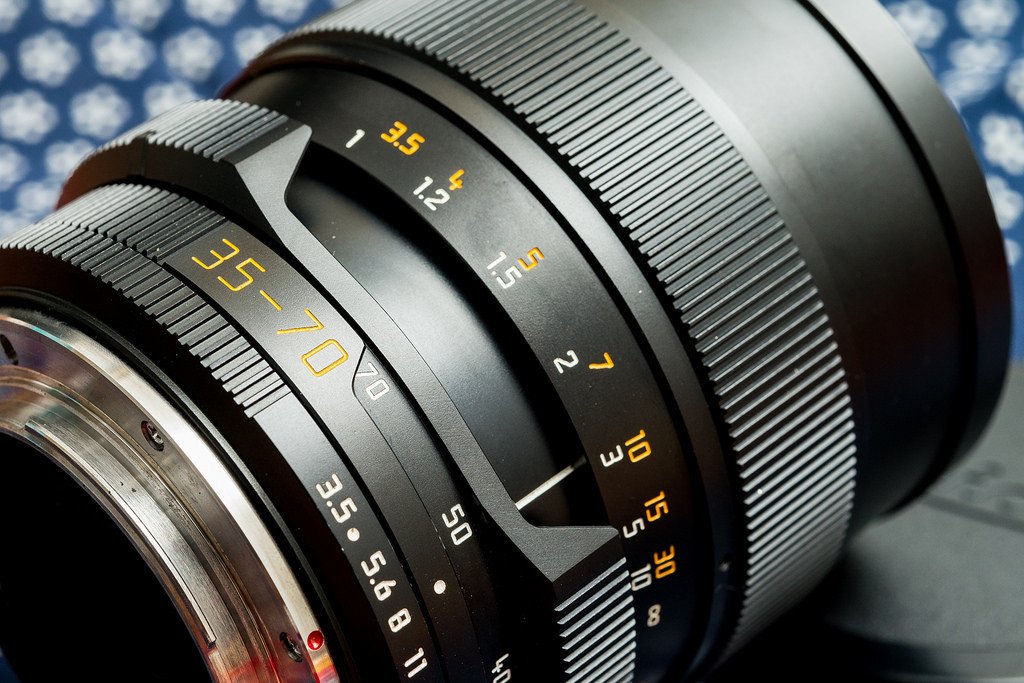
Each brand has a different way of labeling their DOF scales, for instance, Nikon’s scales are always painted in the same colour as the aperture, allowing you to easily identify which line corresponds to which aperture value. But do take note, not all manual lenses include a DOF scale! Take for example the Leica R lens as seen above, it does not come with a DOF scale, but that’s also a part due to it being a zoom lens. Just remember that, “the newer the lens, the higher the possibility of it not having a DOF scale”, therefore if you want to know the information yet your lens does not come with a scale, do go online and look at relevant resources, and do research according to your lens brand, focal length, and model number! If you are interested in our articles, you can also LIKE our page:)
相關文章
-
Camera for girls, consideration of appearance and right tech on the inside
-
Learning by observing: Understand how focus function on camera works by observing a picture
-
Introduction to the “Three Big Dragons and Three Little Dragons” of camera lenses
-
Dedicated to new photography fans, three key methods for the operation of Speedlights
-
Get acquainted with the perspective compression of long-focus lens
-
Introduction to the classifications of Nikon manual focus lens
